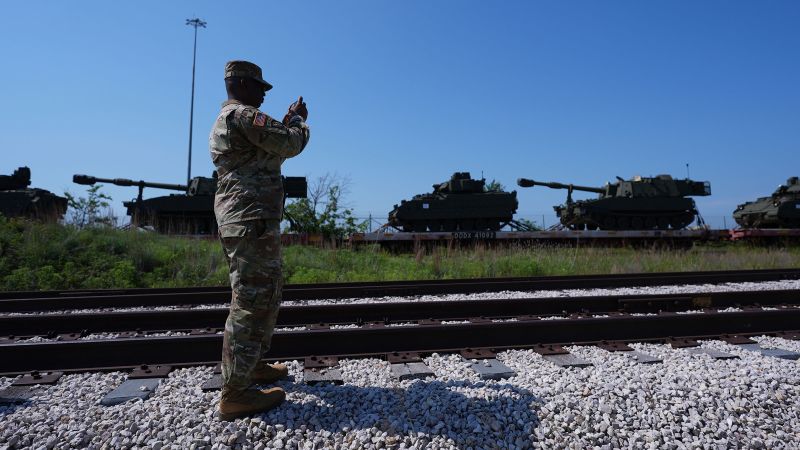The upcoming military parade scheduled to take place in Washington, D.C. on June 14 is poised to be an unprecedented event that aligns with the celebration of the U.S. Army’s 250th birthday. This ambitious undertaking, which has been long in the planning stages, is expected to fulfill President Donald Trump’s vision of a grand display showcasing military prowess; however, it has also raised concerns among city officials regarding the potential impact on D.C.’s infrastructure due to the sheer weight of military hardware that will be involved.
With an estimated total of seven million pounds of military vehicles and equipment rolling through the streets of the capital, the parade presents a logistical challenge that the U.S. Army is taking seriously. As the preparations advance, reinforcing measures for the roads designated along the parade route have already begun, costing upwards of $3 million so far. The Army Corps of Engineers spearheads this reinforcement effort, using steel plates to protect vulnerable areas of the roads, especially at locations where tanks will have to maneuver sharply.
Approximately 7,000 soldiers are expected to participate in the event, which will feature an impressive array of military assets including numerous M1-A1 Abrams tanks, along with Bradley and Stryker fighting vehicles, Howitzers, and other artillery pieces. The planning for this military spectacle only officially commenced two months prior to the event, although the idea itself has been part of Trump’s agenda since his earlier term in office. Previous attempts to stage such a parade were called off due to considerable cost estimates, which had climbed as high as $100 million.
Despite past setbacks, this iteration of the parade will focus solely on the U.S. Army, resulting in a smaller, less costly display. Preparations include the meticulous transportation of military vehicles from Fort Cavazos in Texas to Maryland via train. Once they arrive in Jessup, Maryland, they will be transferred to flatbed trucks for their final journey to D.C.
Specific engineering assessments are in place to mitigate any potential damage to the roads. Colonel Jesse Curry, the head of the Office of the Chief of Engineers, has reassured the public that the risk of severe structural harm is minimal. As per his statements, the Army is not only collaborating with various authorities and utility companies to safeguard infrastructure but taking pro-active measures such as installing new track pads on vehicles and limiting their speeds during the parade.
The intricate planning process has included thorough evaluations of underground utilities, with discussions held with several agencies like the National Park Service and Washington Gas to preemptively address any infrastructural concerns. Notably, the Army has found that many critical underground lines are positioned beneath sidewalks rather than the roadways themselves, which considerably reduces the risks associated with the event.
The parade will trace a historical path beginning at the Lincoln Memorial along Constitution Avenue, reflecting on the Army’s storied history through various wars—dating back to the Revolutionary War. Vehicles from World War I, II, the Vietnam War, as well as the Gulf War and the Global War on Terror will be represented in the march, showcasing not only the evolution of military technology but also patriotic dedication.
Furthermore, attendees can expect a thrilling aspect of the parade with a significant flyover that will feature over 50 military helicopters, including AH-64 Apaches and CH-47 Chinooks. The event will culminate with the Army’s Golden Knights parachute demonstration team presenting the President with an American flag, marking the only direct involvement Trump will have with the parade. With all these elements combined, the 250th birthday parade is anticipated to be a memorable representation of American military heritage, combined with careful planning and execution designed to minimize infrastructural harm while delivering a powerful message of national pride.



